How to Unlock a Door with a Bump Key
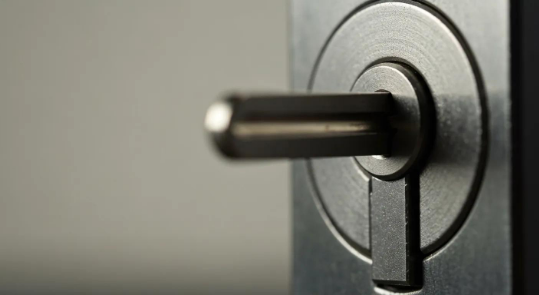
Did you know that many standard pin tumbler locks can be opened in seconds with a single bump key? In this expert guide, Lost Key Locksmith explains how to unlock a door with a bump key, reveals the underlying mechanics of lock bumping, outlines the security risks involved, and provides proven prevention strategies. You will discover what a bump key is, how lock bumping attacks unfold, practical protections including high-security lock options and door reinforcement, and when to call a licensed locksmith for a security assessment. Follow this roadmap to strengthen your home security against one of the most undetectable break-in techniques.
What Is a Bump Key and How Does Lock Bumping Work?
A bump key is a specialised metal key blank filed to the maximum cut depth on every pin position, allowing kinetic energy to transfer through the pin stacks and momentarily align them at the shear line. When the key is inserted and struck, the pins jump briefly above the cylinder’s shear line, enabling the plug to rotate and the door to open without the original key. For example, tapping a Kwikset-profile bump key with a screwdriver handle can bypass a residential deadbolt in under five seconds, illustrating the simplicity and speed of lock bumping.
What Is a Bump Key and How Is It Made?
Crafting a bump key begins with selecting a blank keyed to the target lock’s profile and filing each cut to the deepest possible position.
- Blank Profile → Shape → Matches lock keyway
- Material → Brass or nickel silver → Provides durability and precise impact transfer
- Cut Depth → Maximum (depth 0) → Ensures pins can jump freely
- Filing Technique → Uniform strokes → Creates consistent kinetic response
By machining the key cuts to the maximum depth, the bump key maximises pin movement upon impact, making it effective across all locks sharing the same keyway series.
How Does Lock Bumping Exploit Pin Tumbler Locks?
Lock bumping takes advantage of the simple spring-loaded pin design inside pin tumbler locks. A bump key transfers kinetic energy through the bottom pins, causing them and the top pins to separate momentarily at the shear line. This separation liberates the plug, allowing it to rotate.
Since no drilling or forced entry occurs, the bump attack leaves virtually no visible damage, making detection and forensic analysis difficult and enabling unauthorised entry without obvious signs of tampering.
The Science of Lock Bumping: How Vulnerable Are Your Locks?
Pin tumbler locks, commonly found in residential and commercial settings, are inherently susceptible to lock bumping due to their design, which relies on the precise alignment of pins. While some higher-quality locks may include security features, many standard locks remain vulnerable to this manipulation technique.
What Are the Step-by-Step Actions in a Lock Bumping Attack?
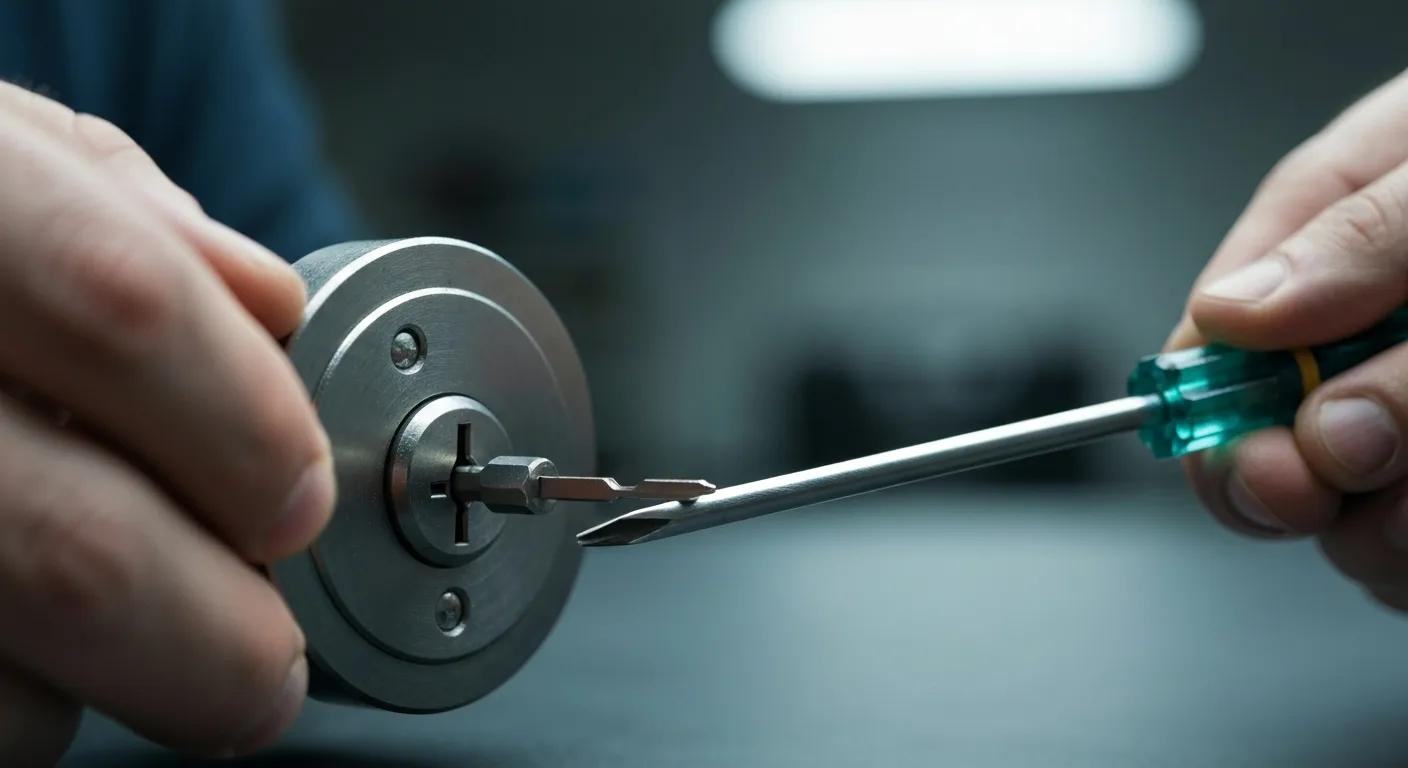
Before exploring safeguards, it’s important to understand the exact sequence of a bumping attempt:
- Insert a correctly profiled bump key fully into the lock.
- Withdraw the key one notch so that the cuts align just below the shear line.
- Apply slight rotational tension on the key with a torque wrench or screwdriver.
- Strike the back of the bump key with a mallet or handle to transfer kinetic energy.
- Maintain tension as the pins momentarily jump above the shear line.
- Turn the key’s handle to rotate the plug and unlock the door.
These steps demonstrate how minimal tools and no specialised training can compromise vulnerable pin tumbler cylinders.
What Are the Security Risks of Using a Bump Key on Your Door?
While lock bumping offers quick access, it poses serious threats to residential security, insurance validity, and personal safety. Unauthorised entry via bump key leaves no forced-entry marks, complicates insurance claims, and exposes occupants to theft, vandalism, or physical danger. Recognising these risks is the first step toward deploying effective countermeasures.
Why Are Pin Tumbler Locks Vulnerable to Bump Keys?
Pin tumbler locks rely on spring-loaded bottom and top pins that align at a fixed shear line when operated by the correct key. Because this mechanism is purely mechanical and lacks anti-bumping features, a bump key’s kinetic impulse can disrupt the pin stacks. The absence of security pins or sidebars in most residential cylinders makes them especially susceptible to this form of non-destructive entry.
How Does Lock Bumping Enable Undetectable Unauthorised Entry?
Lock bumping leaves cylinders intact and door frames unmarked, creating no visible signs of forced entry. Insurers often require proof of forced entry for payout; bump attacks undermine these claims and shift liability to homeowners. This stealthy breach method not only facilitates theft but also delays detection, giving intruders plenty of time to ransack properties unnoticed.
Bump Keys and What Inspectors Should Know About Them
Bump keys allow for quick, often undetectable entry into many pin-tumbler locks, leaving minimal evidence of forced entry. While possession of a bump key is not universally illegal, its use for unauthorised entry is a criminal act, and the lack of forced entry marks can complicate insurance claims.
How Easy Is It for Burglars to Use Bump Keys?
Thanks to online tutorials and readily available key blanks, bump keys are accessible to anyone with basic DIY skills. A single YouTube video and a $5 key blank suffice to acquire the technique. This low barrier to entry means that lock bumping is common among burglars, making unprotected pin tumbler locks a widespread vulnerability in neighborhoods across the country.
How Can You Protect Your Home from Lock Bumping?
Protecting your home from lock bumping requires a combination of upgraded hardware, professional expertise, and reinforced entry points. By installing high-security locks, adding security pins, and reinforcing door frames, you can thwart kinetic attacks and ensure long-term peace of mind.
What Practical Steps Can Homeowners Take to Prevent Lock Bumping?
Homeowners can implement these measures to significantly reduce bumping risk:
- Upgrade to high-security cylinders with restricted keyways.
- Install security pins (mushroom, spool, or serrated designs) in existing locks.
- Reinforce door frames with metal strike plates and longer screws.
- Add secondary barriers such as security bars or door jammers.
- Schedule a professional security assessment with a licensed locksmith.
Implementing these steps creates layered defenses that resist bump keys and other intrusion methods, elevating overall home security.
How Do Security Pins Enhance Lock Resistance Against Bump Keys?
Security pins distort pin movement and create false shear-line feedback, preventing the bump key from aligning all pins simultaneously.
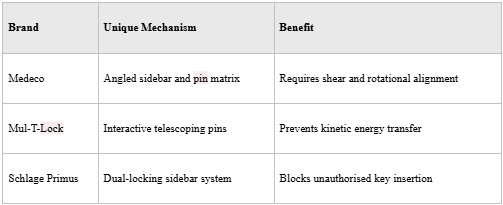
Why Is Door Frame Reinforcement Important for Bump Key Prevention?
Even a bump-resistant cylinder can be compromised if the surrounding door frame fails under torque. Reinforcing the frame with a heavy-duty metal strike plate and 3-inch screws secures the lock body and prevents spreading or warping. This reinforcement ensures that any applied force whether bumping, kicking, or prying remains ineffective at compromising the door’s structural integrity.
What Types of Bump-Proof Locks and High-Security Solutions Are Available?
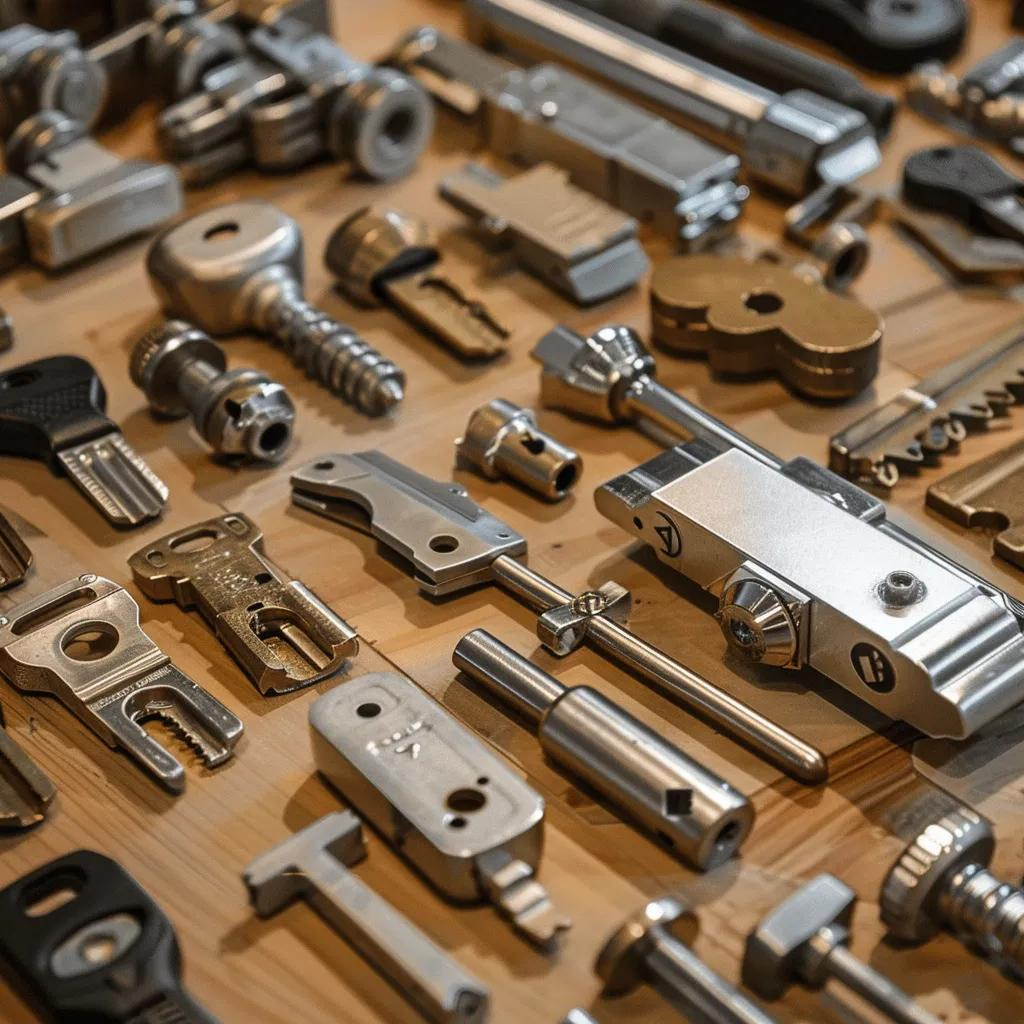
High-security locks integrate advanced mechanisms such as sidebars, rotating disks, and restricted keyways that make bump keys obsolete. These products exceed standard industry ratings and offer enhanced durability, drill resistance, and key control features.
What Features Make a Lock Bump-Proof?
- Sidebar mechanisms that require simultaneous alignment of multiple elements.
- Rotating disc tumblers that cannot be impacted by kinetic force.
- Restricted keyways that only accept factory-authorised blanks.
- Hardened steel inserts for drill and torque resistance.
How Do High-Security Deadbolts Like Medeco and Mul-T-Lock Prevent Bumping?
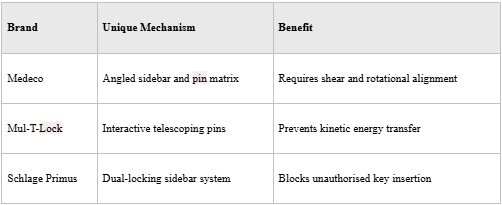
Can Smart Locks and Keyless Entry Systems Eliminate Bump Key Risks?
Yes, smart locks and keyless systems remove mechanical keyways entirely, replacing them with electronic access controls and encrypted communication. Features include:
- Biometric or PIN code entry to prevent unauthorised duplication.
- Audit trails that record every door activation.
- Remote locking and automatic relocking to eliminate human error.
Transitioning to keyless entry not only defeats bump keys but also adds convenience and real-time monitoring capabilities.
What Does the UL 437 Rating Mean for Bump Resistance?
The UL 437 standard tests locks for high-security attacks, including bumping, picking, and drilling. A UL 437 rating signifies:
- Minimum cycles of key insertion and removal without failure.
- Resistance to 20 picks in under five minutes.
- Endurance against bumping under controlled impact tests.
Choosing UL 437-rated hardware ensures compliance with rigorous industry benchmarks for bump-proof performance.
When Should You Call a Locksmith for Bump Key Security?
Professional locksmith intervention is essential when upgrading locks, performing security assessments, or responding to suspected breaches. A certified locksmith brings specialised tools, factory training, and a full suite of solutions to safeguard your property.
What Locksmith Services Help Protect Against Lock Bumping?
- Security Assessments → Evaluate existing hardware and vulnerabilities
- High-Security Lock Installation → Replace cylinders with bump-proof models
- Rekeying Services → Render lost or compromised keys useless
- Emergency Lockout Response → Secure premises after suspected entry
Why Is Professional Installation Better Than DIY for Bump-Proof Locks?
Professional installation guarantees correct alignment, precise torque specifications, and secure mounting. In contrast, DIY attempts risk misalignment of security pins, improper strike plate placement, and voided warranty coverage. A locksmith’s expertise ensures optimal performance and preserves manufacturer certifications.
What To Do If You Suspect Your Door Has Been Bumped?
If you notice erratic key resistance, unexplained lock movement, or missing security pins, follow these steps:
- Inspect the cylinder for looseness or debris around the keyway.
- Test lock operation with the original key under slight tension.
- Contact local law enforcement to document potential forced entry.
- Call Lost Key Locksmith for a forensic lock inspection and rekeying.
- Upgrade to bump-resistant hardware to prevent repeat incidents.
Prompt action minimises risk and restores full security.
Are Bump Keys Legal? What You Need to Know About Bump Key Laws
Bump key legality varies widely: owning a bump key might be permitted, yet using it for unauthorised entry is universally criminal. Understanding local statutes helps avoid inadvertent legal violations while empowering responsible locksmiths to offer ethical security solutions.
How Does Bump Key Legality Vary by Jurisdiction?
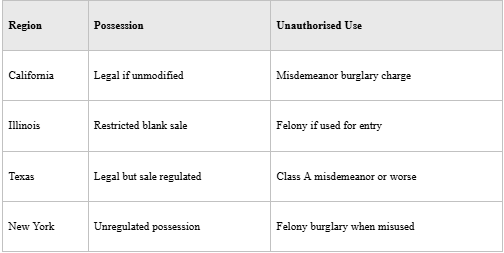
What Are the Ethical Responsibilities of Locksmiths Regarding Bump Keys?
Professional locksmiths must refuse illicit requests and educate clients on both defensive and legal implications of bump keys. Ethical practice includes verifying identity, issuing clear usage disclaimers, and promoting preventive solutions rather than distributing tools for unauthorised access.
Can Possession of a Bump Key Be Used as Evidence in Criminal Cases?
Yes, law enforcement can treat bump keys as prima facie evidence of intent to commit burglary. Courts often admit bump keys seized during investigations to demonstrate planning and premeditation, leading to enhanced charges and potential sentencing enhancements.
How Does Lost Key Locksmith Provide Expert Solutions for Bump Key Security?
Lost Key Locksmith combines local expertise, rapid response, and tailored security assessments to guard homes and businesses against bump key threats. Our certified technicians deploy industry-leading methods and hardware to deliver reliable, long-term protection.
What Makes Lost Key Locksmith a Trusted Authority on Lock Bumping?
- Decades of combined locksmith experience across residential and commercial markets
- Certifications from Associated Locksmiths of America and UL training programs
- Insurance-approved installations meeting UL 437 and ANSI Grade 1 standards
- Membership in The Open Organisation of Lockpickers (TOOOL) for ethical best practices
How Does Lost Key Locksmith Assess and Upgrade Your Home Security?
Our proven process involves:
- On-site security audit to identify vulnerable entry points.
- Pin tumbler inspection and torque testing of existing cylinders.
- Customised selection of bump-proof cylinders or smart lock systems.
- Precision installation and alignment by certified technicians.
- Hands-on demonstration of new locks and user training.
This end-to-end approach guarantees seamless integration and optimal performance.
How Can You Schedule a Security Consultation for Bump Key Protection?
To fortify your property against lock bumping, simply call our 24/7 hotline or submit the online consultation form. A security specialist will assess your needs, provide a transparent estimate, and schedule a convenient appointment. Take action today to elevate your door security and deter unauthorised entry.
Safeguarding your home against bump key attacks demands both awareness of the technique and proactive defense measures. By understanding how bump keys work and investing in high-security locks, security pins, and professional installation, you dramatically reduce your vulnerability. Lost Key Locksmith stands ready to evaluate your property, recommend tailored upgrades, and implement robust solutions. Contact our team now to schedule your security consultation and protect what matters most.
Read More
.jpeg)
Emergency Locksmith Services: What to Do When You're Locked Out of Your Home?
This guide will walk you through the quick steps you can take to regain access to your haven and get back to your normal life, all with the help of a reliable mobile locksmith in Sydney: Lost Key Locksmiths.

Digital Door Locks vs Traditional Locks: Which Is Best For You?
Wondering what is the best digital door lock for your property? Secure your home with expert advice from Lost Key Locksmiths.
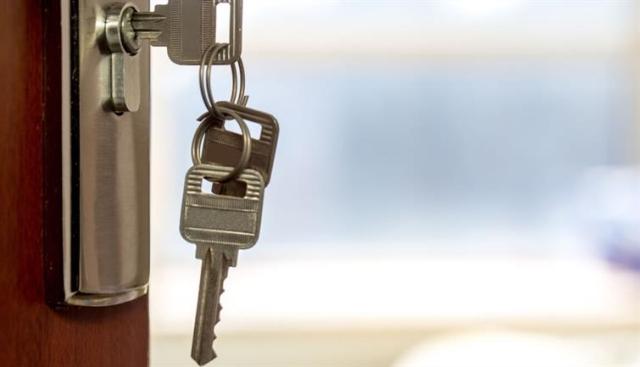
What to know about Door locks and How to choose the best
Your door lock is literally the only thing standing between your family and anyone who might want to get inside without permission, yet most people know more about their coffee maker than the security device protecting their home.





